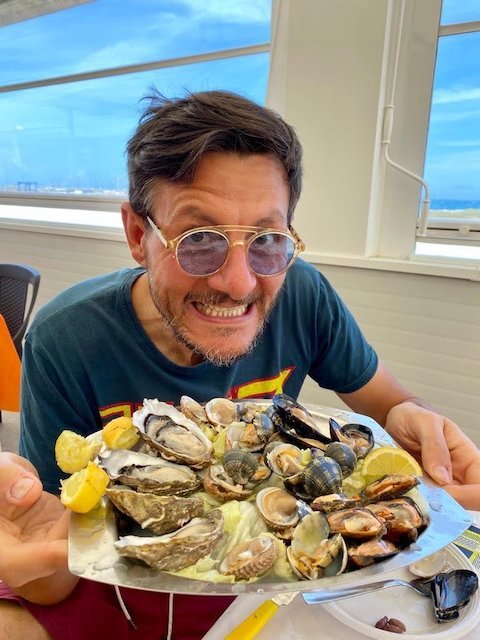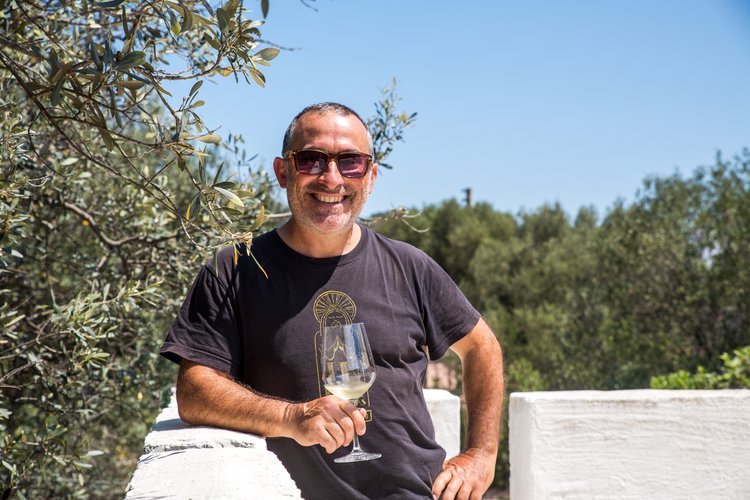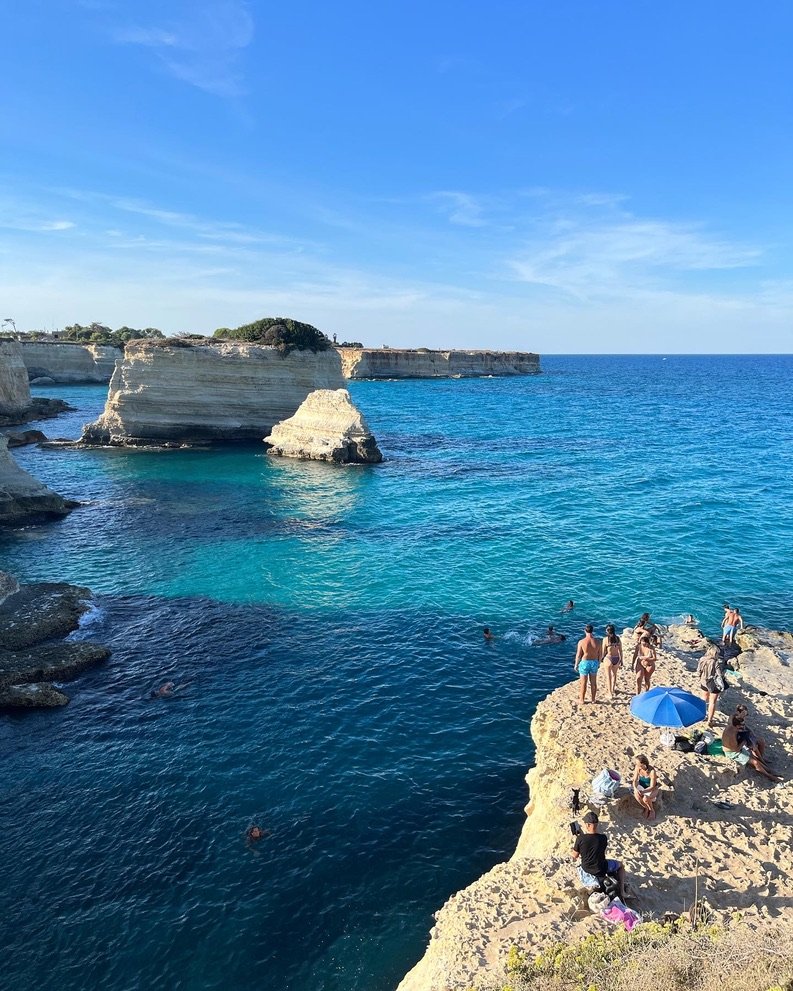A Local’s Guide to Visiting Bari, Italy
Bari is the capital of Puglia and the third largest city in southern Italy after Naples and Palermo. Almost 350,000 people live here, combined with the hundreds of thousands of people regularly visiting on business or passing through its railway, port, and airport.
Bari is big and busy, which doesn’t make it the easiest or most serene place to explore, but to me, it’s the most vibrant, interesting, and authentic place to visit in Puglia, and a visit here gives you a real taste of local culture.
Thousands of years of history have left amazing monuments throughout the city, but the past is not the only thing to look for. Bari is a modern city full of energy, and it offers countless events, shows, performances, exhibits, music, etc. It is without a doubt the cultural center of Puglia.
Once rarely visited and largely described as “unsafe” in the past, Bari’s reputation has changed a lot in recent years and it now sees its fair share of international visitors in addition to domestic ones.
The city is never overrun by tourists, but it is well accustomed to welcoming foreign guests, so you will find everything you need here: from tiny local shops to high-end boutiques, street food to fine restaurants, simple bars where you can grab a slice focaccia and a cold local beer to fancy cafes with creative cocktails and an aperitivo.
More Puglia travel info:
For more ideas on travel in Puglia, check out my Puglia regional guide and this one week itinerary.
If you could use some help planning your itinerary, schedule a Puglia travel consultation with me!
Table of contents
Where is Bari
How to get here
Why visit Bari
Best time to visit
How long to spend
Where to stay
What to see & do in Bari
Foods to try in Bari
Best restaurants
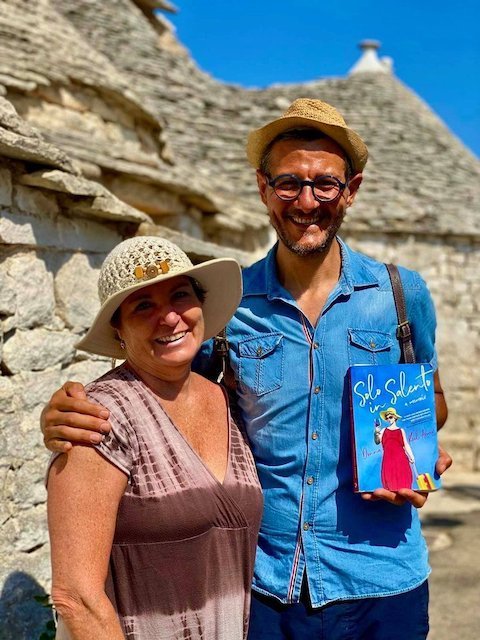

Local help with your planning
If you could use some help coming up with a great plan for your visit to Bari (and Puglia more broadly), schedule a Puglia travel consultation with me!
These are one-hour Zoom calls where we can chat about the trip you’re planning and I’ll share my tips and advice, answer your travel questions, and help you perfect your itinerary.
Where is Bari
Bari, the capital of Puglia, is a coastal city in southeastern Italy, between the “spur” and the “heel” of the Italian “boot”. It is about 5 hours and 285 miles south of Rome, and approximately 3 hours and 170 miles east of Naples.
The city’s immediate surroundings are densely populated and fairly industrial, and around 1/3 of the entire population of Puglia lives within the metropolitan area.
The terrain right outside of Bari is largely flat, while heading inland will take you up on the high Murgia plateau called Altopiano delle Murge which eventually leads to Matera. As you head south, you will pass through more flatlands until you eventually reach the hilly area called the “Valle d’Itria”, not long after passing the towns of Monopoli and Locorotondo.
Lecce and most of the Salento peninsula lies 150 km to the south, about 1.5 hours drive.
How to get here
Being a major transportation hub for Puglia and southern Italy in general, Bari is extremely well connected and very easy to get to. The city has an international airport that is connected to all the major capitals of Europe and other large cities in Italy.
If you’re arriving to Italy from outside of Europe, however, you will likely first fly into Rome or Milan and will then have to decide how you want to continue on to Bari: either by a short domestic flight, a train ride, or renting a car and driving down.
Domestic flights
Domestically within Italy, Bari’s airport is connected with Rome, Milan, Venice, Bologna, and Pisa. Rome and Milan offer by far the most connections, with multiple flights every day arriving into Bari from each destination.
Flights take 1.5 hours from Milan and 1 hour from Rome, and tickets typically cost between 20 and 150 euros.
Arriving by train
If you’ll be traveling elsewhere in Italy before coming to Bari, it’s likely that the train will be the best way to reach the city. Bari has frequent direct daily connections with Rome, and can also be reached from Milan, Venice, Florence, Bologna (as well as other major cities throughout Italy), albeit most of those trips will require changing trains in Rome.
Trenitalia, Italy’s national rail carrier, runs high-speed Frecciarossa trains run from Rome to Bari, with about 6 daily departures. The journey takes around 4 hours and tickets can cost as little as 15 euros if purchased in advance. Italo, a private train company, also runs high-speed trains.
You can also reach Bari from Naples by train, but the journey is very slow (it’s mostly run by Regionale trains which make frequent stops) and you will need to make a change in the city of Caserta.
Generally, if coming from Naples or the Amalfi Coast, the better option is to take a bus, which will take around 3.5 hours and can cost as little as 5 euros.
Where to buy train tickets
It’s always best to book your trains directly with Trenitalia or Italo, but if you want to compare options from both companies, the aggregator website Omio is really easy to use and has a good interface. It shows routes and options for trains, buses, ferries, and even flights from a host of different companies and lets you keep all your bookings in one place.
Renting a car
If you’ll be arriving to Bari as your first stop in Puglia and planning a road trip from there, I’d recommend picking up your car at Bari Airport. It has the largest selection of rental cars in Puglia, with all the big international companies as well as lots of smaller local agencies.
Because parking is limited in Bari, driving in town is stressful, and the city is very walkable, you don’t want a car while visiting. Instead, you should get your car on the day you leave town. The airport is a short drive outside of town so a taxi to the car rental location won’t cost you much and you’ll also be able to get straight on the highway, avoiding city center driving. This will save you money and a lot of stress!
To check prices and book, I recommend using the following two car rental websites:
DiscoverCars includes offerings from all the major international rental companies as well as lots of smaller local agencies, which often have much better pricing. You can often find great deals.
AutoEurope tends to be more expensive, but they only list options from large, well-reviewed companies and their customer service is excellent. Their deals often include “zero deductible” (i.e. full coverage) rental insurance.

Connect with Paolo, our Lecce-based local expert, for help perfecting your itinerary, answers to all your travel questions, and fabulous local tips!
Why visit Bari
Many visitors to Puglia skip Bari entirely, at the very most using it as a transit point for getting to or departing from the region. This is a mistake, as Bari is well worth visiting and is entirely different from everywhere else you’ll visit in Puglia.
Here 4 reasons why I think every traveler should spend at least a day or two here:
1. The history
In the Middle Ages, Bari was an important port, which made it a prominent and wealthy city. Pilgrims heading east to Jerusalem would depart from here, and valuable goods from the east such as spices, silk, and exotic items, arrived into the Italian peninsula through the port.
More than 1,000 years later, a lot of that history is still standing and can be found throughout the city. In more recent history, Bari’s Murat Quarter (especially along Sparano street – the area’s main artery) is an incredible example of 1800’s architecture. As you wander down Sparano street, you’ll pass by the city’s best stores and its finest Art Nouveau buildings.
And for those of you interested in WW2-era Italy, just remember that the Allies settled down in Bari and the entire area of the city from the Margherita Theatre (now used for art exhibits) to the old port has stories to tell about the war.
2. Unexpected visitors
Bari is a place where east and west meet. Here, the church where the body of Saint Nicholas (yep… Santa!) is buried attracts thousands of people from all over the world, especially from Greek Orthodox countries. This gives an exotic touch to the atmosphere and a bit of foreign flavor.
There is also a Russian church in Bari and if you listen to the people around you speaking, you might also notice a surprisingly high number of visitors from Eastern Europe. They come for religious reasons, but they stay for the lovely shops, elegant cafes, and beautiful architecture.
3. The cuisine
Bari’s old town is still authentic and lively and it’s one of the very few examples of a well-preserved historic center that was never abandoned following WWII. That fact explains why you can still walk around the alleys and notice people cooking, neighbors sitting in front of their homes chatting, and plenty of small neighborhood vendors like barbers, grocers, and butchers.
You may be wondering “what does that have to do with food?”… Well, since the city’s center remained inhabited and residents never left or spread out elsewhere, their traditions, especially surrounding food, never changed - life simply continued.
Bari and its residents revere food, and here you’ll find an abundance of everything. Street food, amazing bakeries making the typical focaccia (be careful for the olive pits – they leave them in!) and fried dough (popizze), incredibly fresh seafood, the now super popular “orecchiette street” where old ladies make handmade pasta, people frying polenta (“sgagliozze”), etc. There is no shortage of options.
The fish market is a blast to explore, fancy restaurants serve up raw seafood just like sushi, rustic trucks roast meat in front of you (don’t miss the local meat wraps called “braciole”, but check if they are made with horse meat!), octopus panini are on the menu, and even grocery stores will turn a simple sandwich into a masterpiece.
Read more in my guide to Bari’s best restaurants.
4. Logistics & transportation
Bari is the central transit point throughout all of Puglia, and it has by far the most connections with the rest of the region and Italy at large. It’s very likely that you’ll wind up in Bari at some point during your trip, so if you’re already here, why not stay a while?
Also, if you’ve decided to visit Puglia on your own and won’t be renting a car, Bari is the best base from which to explore the rest of the region. While Puglia doesn’t have very good public transportation overall, Bari is the exception to this rule. Bari is right in the middle of the region, and almost all transit passes through here, so you can get to quite a few other cities, towns, and attractions in Puglia via public transportation.
One word of warning for anyone who decides to rent a car and stay here: the traffic can be quite heavy and drivers can be a bit of a challenge, so you’ll need to take your time and go with the flow.
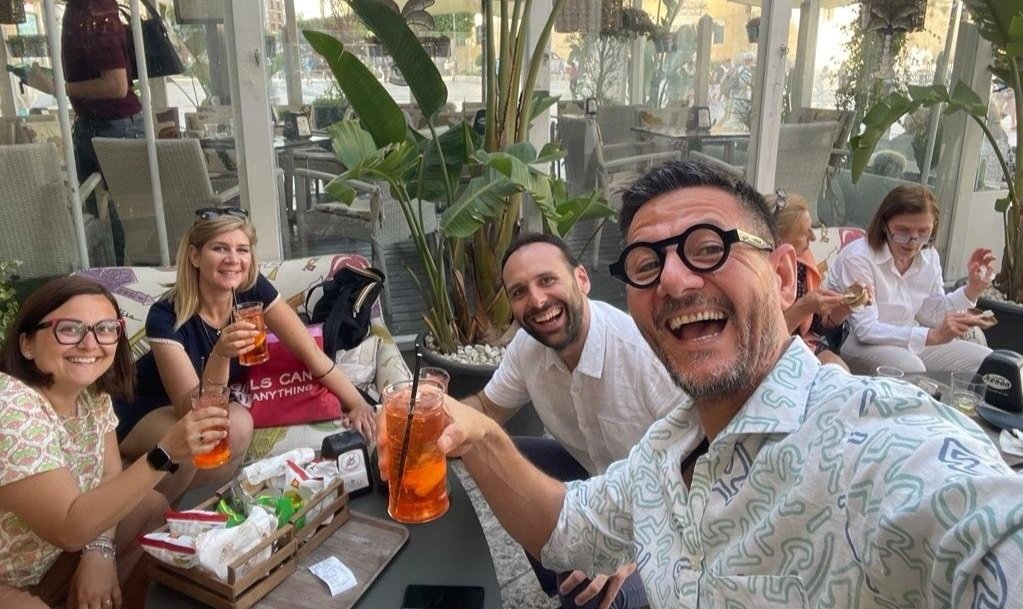
Best time to visit
Photo: C.R.A.P APOLLO, CC BY-SA 4.0, via Wikimedia Common
Bari is a great place to visit all throughout the year, but spring and early fall are the most pleasant times to be here, due to the excellent weather (long, sunny days and warm but not too hot) and the lack of summertime crowds.
December and early January can be a nice time to visit as the weather won’t be too cold yet, there will be very few other tourists, and the city comes alive for the holiday season. A visit during Christmas and New Years offers the chance to see 500,000 crazy southern Italians in full festival mode, which is a lot of fun.
As for when not to visit, I would suggest skipping July and August if possible. This is the hottest time of the year and it can be really brutal here. It will be too hot in the afternoons to comfortably explore the city, so the better part of the day will be spent hiding inside, to escape the heat.
Add to this that cruise ships regularly dock here during the summer, unloading thousands of daytripping tourists, and this really is not the ideal time to visit.
Jannuary to March: the weather tends to be rainy and and this is the coldest time of year in Bari (and Puglia in general). There aren’t many events going on, and generally speaking, the city is pretty quiet.
April to June and September to October: These two periods, the spring and early fall are unquestionably the best times to visit Bari. The weather is great, the summertime crowds haven’t yet arrived or have already departed, and the city is full of local life and excitement. It’s Bari at its best.
July and August: being the height of high season, there are a lot of events during the summer months, but the weather is just too hot and there are too many people. This is never my recommended time to come here.
November through December: by late fall, the tourists almost entirely disappear from Bari, and the city falls into its regular rhythms. It returns to being a place for workers, students (there’s a large student population), and people going about their daily lives.
This gives the city a pleasant atmosphere, and the weather is still fairly pleasant, especially in November, so it can be a good time to spend a few days here. As mentioned above, a Christmas visit, when the city is full of lights and little markets, is genuinely lovely.
How long to stay
To “see the sights” in Bari will only take you a day, but a visit here shouldn’t really be about traditional sightseeing, so that’s not the right way to determine how long to spend in town.
Bari, unlike Rome, Florence, Venice, or even Naples, isn’t somewhere that you come to see unforgettable sights. Rather, it’s a place to soak up the atmosphere and simply enjoy yourself.
If you want to sample all the fantastic food, explore the city at your leisure, and really get to know it, you will need at least a couple of days here.
Also, life in Bari really starts in the late afternoon, so if you just come in for a day, you’re likely to mostly miss this. Later in the day is when the locals enjoy their city the most; it’s when the best bars, restaurants, and pubs open their doors and when the ladies start frying up local delicacies right in the middle of the street.
People grab drinks in the city’s squares, meet up with friends, and head out for dinner, filling the streets with a buzzing atmosphere. It’s a lot of fun, and having a couple of nights here to enjoy it is really nice.
Additionally, Bari is a great base from which to set out on day trips around Puglia, so you could easily base yourself here for a good chunk of time, dedicating the day to visiting the surrounding places of interest, and the evenings to enjoying the city.
Places like Trani, Castel del Monte, Barletta, Molfetta, Bitonto, Giovinazzo, Matera, Alberobello and the surrounding villages, Polignano, and Monopoli are all within relatively easy reach of the city.
So, if you have time to spare, I would suggest spending 2 to 3 days in Bari.
Where to stay in Bari
If you look at Bari on a map and find the central train station, you’ll notice that the railway line sort of cuts the city in two, creating one side to the north, and another to the south. At the far end of the northern half of the city, the other boundary is the Adriatic sea, and this area between it and the railway lines is where I would suggest that you stay.
Closer to the train station and rail lines is the area called Murat, which is a bit more modern, while the area toward the sea, Bari Vecchia, is older and more historical.
Bari Vecchia is charming and full of locals. All the buildings are historical and there is lots of action all throughout the day. Murat, is where all the shopping is, as well as the modern restaurants, bars, and high-end cafes.
Generally speaking, I would say that if you are going to stay for only one day, being closer to the old town is a must. However, if you are planning to stay longer, then you could consider staying in Murat, which has a bit more of the comforts and convenience of modern life.
Personally, I really like the area by the sea, just outside of the old town, where there are a lot of very cool places to go for a meal or a drink.
There are all kinds of accommodation options in Bari, from budget to high-end, but bear in mind that most visitors to the city are here on business rather than vacation, so hotels are often geared toward business travelers. This means that it’s not super common to find charming boutique hotels.
Recommended hotels:
Vis Urban Suites is a new hotel with a very boutique feel, a good on-site spa, and excellent breakfast. The rooms are lovely and stylish and the location in the Murat neighborhood is very convenient; a few minutes’ walk to both Bari’s main shopping streets and the old town. It’s certainly one of the nicest options in the city. Rooms start at $300 per night.
Dilman Luxury Stay in Murat bills itself as a luxury hotel. The location is great, but the design is a bit particular; very modern with clean lines and lots of white. It’s not my personal taste, but I get the appeal. You can typically find a room for $300 USD.
JR Hotels Bari Grande Albergo delle Nazioni is a nice modern hotel just by the waterfront and a quick walk to Bari Vecchia. Rooms cost around $220 USD a night.
Palazzo Calò is inside of Bari Vecchia and offers pretty studios with kitchenettes. The design is stylishly rustic with exposed wood beams and stone walls. Nightly rates run between $220 and 350 USD depending on the season.
Al Pescatore B&B at the edge of Bari Vecchia and just behind the Castelo Svevo is a cute option at a reasonable price. Rooms are modern, spacious, and airy and the staff is knowledgeable and helpful. Rates range from $150-200 USD.
Travel B&B is a charming little bed and breakfast in a great location for shopping, eating, and people watching. It overlooks a leafy square and is only a 2-minute walk from the train station. Figure that you’ll pay around $150 a night.
B&B Murex in the old town is clean, comfortable, and excellently located. But be aware that there is no elevator, so you have to be ok potentially carrying your bags up the stairs. Rates from around $100 USD.
What to see and do in Bari
Photo: Nicolabel, CC BY-SA 4.0, via Wikimedia Commons. Cropped from original
1. Visit Saint Nicholas Church
Saint Nicholas Church is one of the oldest examples of Romanesque architecture and it’s a significant pilgrimage destination, with religious visitors (and irreligious ones as well) venturing down into crypt where the body of the saint is kept.
It is the only place where you can see under a regular catholic church a real greek-orthodox chapel. Among the amazing masterpieces that the church preserves don’t miss the sculpture in a shape of a seat held by little figures made during the XII Century
2. Tour San Sabino Church
This is the city’s cathedral (where the bishop is based out of) and it is an amazing building built in the 13th century. During the Equinox, you can see the sunlight entering through the main rose glass window and lighting up a mosaic on the floor, which has a mirror image of the window.
3. Explore the Swabian castle
The castle complex is made up of various structures belonging to different periods of history, and inside it preserves a collection of molds of the best Romanesque decorations collected from all over Puglia.
4. Wander down Orecchiette street
In reality, there are at least two “orecchiette” streets, and they run parallel to one another. The most famous stretch of the street has now been turned into almost what I would describe as a performance venue, and this age-old tradition has been corrupted a bit to sell to tourists.
So, take a look, but keep going and explore the alleys all around the Castle to find the original authenticity.
5. Go shopping with the locals along Via Sparano
Via Sparano, the street that connects the old town to the train station, is the best shopping street in Puglia. It, along with the nearby streets running parallel to it, are all pedestrianized (no cars), so you can enjoy a typical italian passegiata (stroll) without dodging traffic.
The best shops are found here, so the shopping is quite good.
6. Attend a show or cultural event
Bari is the cultural center of Puglia and there are great events happening all the time. Look for an Opera or Ballet show, a music concert, or temporary art exhibitions - especially in the area of Piazza del Ferrarese -. Spazio Murat, Ex Mercato del Pesce, and Margherita Theatre are a few venues to check in with.
7. Get local at the fish market
The fish market, at the back of the Margherita Theatre, is an experience in and of itself. Don’t try to practice your Italian there though, because the majority of vendors just speaks the local dialect.
8. Go to San Nicola Stadium to watch a soccer game
SSC Bari, the city’s soccer team, plays in Serie B, the second tier of Italy’s professional soccer league. They are by no means the best team in the world, but the atmosphere at the stadium is great, so if a game day happens to coincide with your visit, you should absolutely try to go.
9. Bike or stroll down the lungomare
In Italy, a lungomare is a seaside promenade, where you can leisurely walk along the shore, chatting with friends, taking advantage of good weather, and just enjoying life.
10. Grab a sandwich and head to the beach
Pick up a simple sandwich or a slice of focaccia from your favorite grocery store or bakery, grab a book, and head to the always popular Pane e Pomodoro (Bread and Tomato) beach for a picnic.
11. Explore the city with me (Paolo), your expert local guide!
It would be my pleasure to show you around this chaotic, lively, and energetic city. I offer walking tours of the historic center, typically around 3 hours or so, where we see the highlights of the city along with little-known gems that I personally love.
As I’ve mentioned throughout this article, Bari is often overlooked by visitors to Puglia, and that’s part of what I think makes a tour here so much fun. This isn’t somewhere that lives off of tourism, and the city doesn’t cater to visitors. So what you we’ll see when we explore Bari is a completely authentic place that isn’t trying to be anything other than itself.
Ready to tour the city? Find tour details here.

Paolo has answers!
Connect with Paolo in Lecce for the best local info and expert help planning a better trip to Puglia!
Dining in Bari
Throughout this guide I’ve peppered in lots of suggestions about street food and local specialties, but I haven’t covered everything yet!
Another must-try typical dish in Bari is the combo panzerotto e Peroni, which means a cold Peroni beer (did you know that there is a massive Peroni brewery right in Bari?) and a fried calzone – a folded pizza stuffed with mozzarella and tomatoes. Sound good? It is!
A grilled octopus sandwich is another very particular local specailty. If you want to try it in a popular street food place, go to Mastro Ciccio in Vittorio Emanuele Street.
The classic Pasta of Bari (and Puglia in general) is the orecchiette, an ear-shaped pasta dressed with olive oil, broccoli rabe, bay leaves, garlic, anchovy and chili peppers.
Another “institution” dish is called riso, palate, and cozze (rice, potatoes and mussels). It is prepared in a casserole where the ingredients are layered with a lot of olive oil, onion, cheese, black pepper, and a few tomatoes, and then it’s all baked together.
A good place to try all these local recipes, in a location that is anything but fancy and where the owner and the waiters seem to hate you (LOL!!), is Osteria Travi Buco.
Local people in Bari are absolutely devoted to fish. They have a great culture around fish/seafood and love to eat it raw, especially by the sea or right at the market.
Doing as the locals do and eating raw seafood, especially from unofficial vendors near the port can be a lot of fun and a truly memorable experience, but it’s impossible to be sure how sanitary it is, so unfortunately I think this is an experience better seen than tried.
There are plenty of proper restaurants that will still prepare raw fish/seafood for you, so you won’t have to mix out on the experience entirely.
When it comes to eating in Bari, you should know that “Baresi” people are famous for being very good (and perhaps aggressive) sellers, so be careful what you order and be sure to confirm prices beforehand.
For more restaurant ideas, check out my guide to Bari’s best restaurants.
Here are a few tips for dining in the city:
Check for a coperto and be sure you’re comfortable with the amount. This is a per-person fee similar to a “service charge”, and it ostensibly covers the cost of bread, linens, silverware, dishwashing, etc.
Really, it’s just a fee that restaurants charge you for dining at the establishment. It’s typically no more than a few euros per person.
Many restaurants will suggest that you try a mix of antipasti (starters) or they will approach your table with a trolley with the freshly caught fish of the day, recommending it to you.
Be careful what you order, or ask to know the prices in advance, as they will sometimes charge ridiculous rates or will just give you way more food than you need (which of course you will end up paying more for).
Ask the waiters or the owner what they recommend, and so long as they don’t just suggest the most expensive dish, follow their recommendation.
In Puglia, restaurants usually specialize in a type of cuisine or even a few specific dishes, so you should always order the appropriate type of food for the establishment you’ve chosen.
Here, we decide first what we want to eat, and then we pick a restaurant that specializes in that. You should do the same.
Relax and accept that service may be slow and your meal will probably take a long time. Locals don’t really care how long a meal is going to take, and for us, a meal out is mostly to facilitate a nice conversation or quality time with our loved ones, so we expect to hang around for a while.
If you are in a rush, you’re better off going somewhere that is clearly a quick, casual, spot where it doesn’t look like you’d have a big, formal, sit down meal.
Restaurants in Bari
The food in Bari is fantastic, and ther are almost too many great restaurants to choose from. For a complete guide to dining in the city, check out my Bari Restaurant Guide.
Even so, I’ve listed below a couple of my favorite restaurants, just to get you started.
Le Due Aquile is a simple, unpretentious place (not rustic though), but it is always full of locals who know the high quality of its dishes.
Biancofiore, on the other hand, is very high-end, romantic, and elegant place that serves up delicious, gourmet cuisine.
Al Pescatore - this longstanding establishment, has served up fresh, delicious seafood for more than 50 years. Much of the fish is laid out on ice in the front of the restaurant, so you can pick exactly what you want.
La Tana del Polpo - For another fabulous seafood spot, cooked or raw, La Tana del Polpo can’t be beat. This is a super casual place, almost only locals, and the prices are fantastic. Great, value, friendly service, and a very fun experience.
Panificio Fiore - This historical bakery in the back of the church of San Nicholas makes some of the best Bari-style focaccia that you’ll find in the city.
Tours in Bari
Although southern Italy’s second largest city, it’s quite recent that Bari has become a popular place for travelers. As such, the tourism industry in the city is not super developed and you don’t find that many activities and experiences geared towards travelers.
Walking tours
Because Bari’s historic core is relatively small, most walking tours in the city last from 2-4 hours. A 2-hour tour is enough time to see the medieval/historic center, while you’ll want 3-4 if you also want to explore the seaside and more modern center of the city.
Any good tour should take you to the historic center around the castle, get you lost in the labyrinthine alleyways, pop out to see the orecchiette pasta ladies, check out the fish market, and make time to enter Saint Nicholas church and the San Sabino cathedral. If you have more time, meandering down elegant Via Sparano and the lungomare also offer the opportunity to learn more about the city’s modern history and culture.
If you’re considering a tour, check out my 3-hour Bari walking tour.
Day trips and driving tours
For a break from the city, Bari’s location more or less in the middle of Puglia makes it a great base from which to explore many of the region’s prettiest towns and cities.
The charming seaside towns of Monopoli and Polignano a Mare are just 30 minutes away and can easily be combined with a visit to whitewashed Ostuni as well. Alberobello and the fairytale towns of the Valle d’Itria are about a 50 minute drive, and even the stunning city of Matera in the neighboring Basilicata region is only 1 hour away. The coast north of Bari is also home to a series of lovely, medium-sized cities like Trani, Bitonto, Giovinazzo, and Molfetta, all of which are more than worth visiting.
To make the best use of your time, it’s a good idea to combine 3 or so towns/cities into a single day of touring. Many towns only need 1-2 hours to explore (and sometimes less), so you can see many places in just a day.
While it might be tempting to do a day trip to Lecce, that’s at least 1.5 hours in the car each way, and it’s really too far to try to squeeze in.
I run full-day driving tours all over Puglia (and Basilicata too), so I’d love to personally show you around!
Tours of Puglia with me
If you’re looking for any tours, I’ve been helping visitors explore Puglia for over 20 years and offer walking tours in all the major cities as well as day trips and multi-day tours to everywhere you’ll want to go! You can see some of my sample tours or send me a message about creating a custom tour on my tours page.


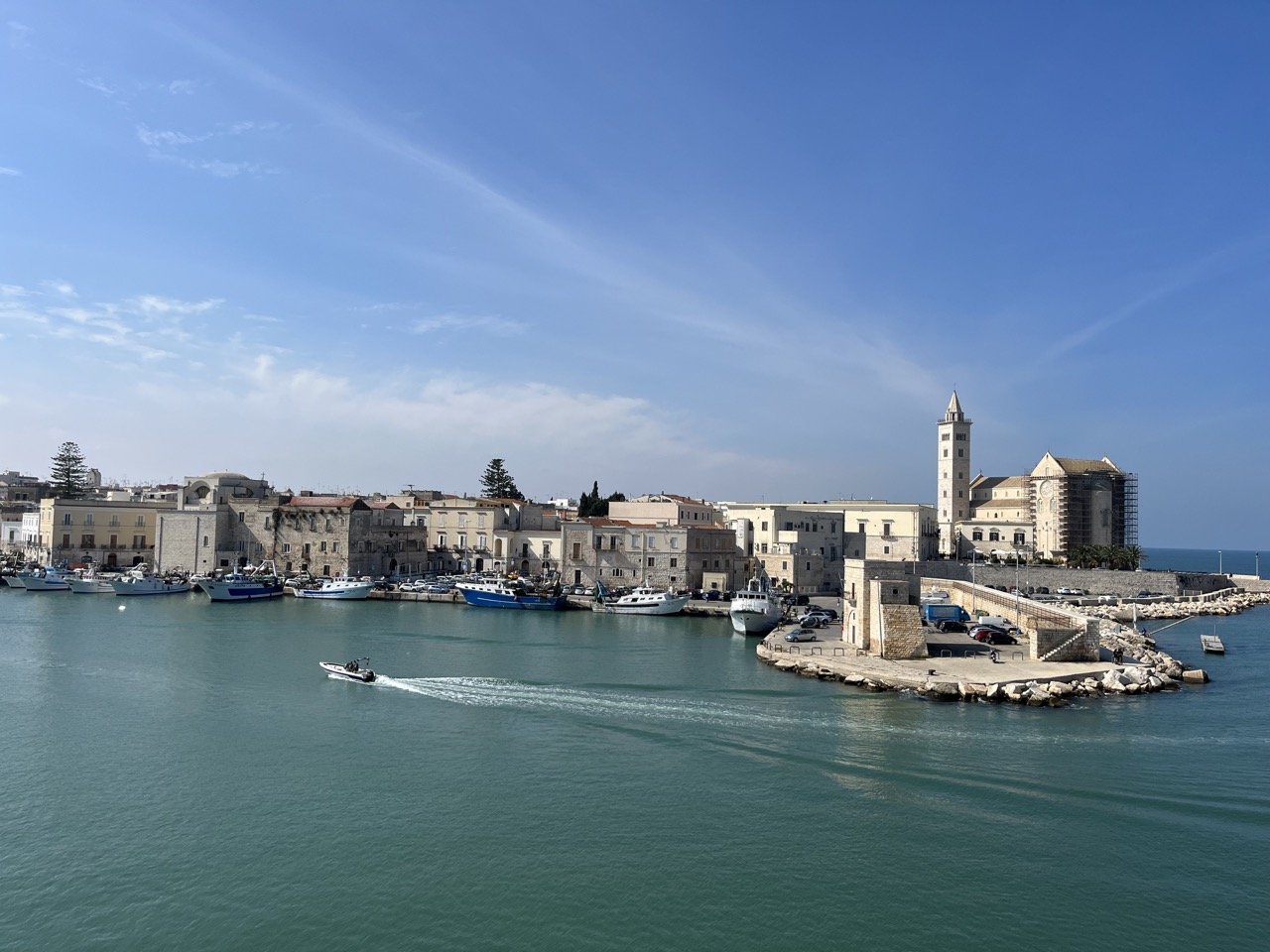



Chat with Puglia expert Paolo!





